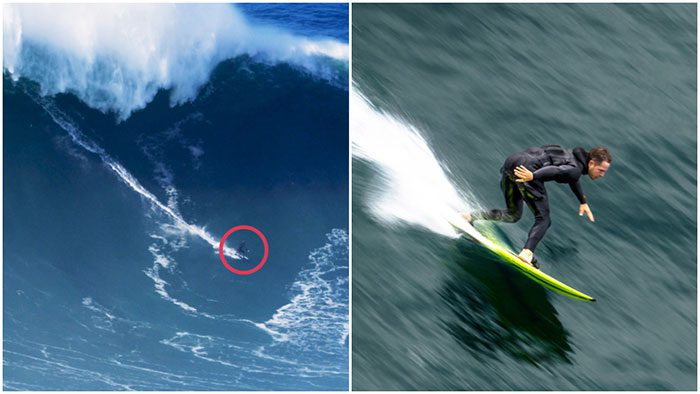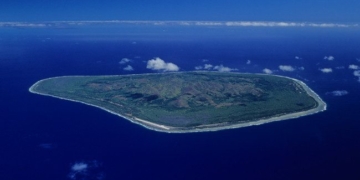The world record in surfing is a wave measuring 26.21 meters high off the coast of Portugal, but this is not the largest wave in history.
Sebastian Steudtner sets the world record for surfing. (Video: World Surf League)
The town of Nazaré on the coast of Portugal is famous for having some of the largest surfable waves in the world, thanks to the unique geological structure of the seabed. On October 29, 2020, athlete Sebastian Steudtner set the world record for riding the largest wave, which reached a height of 26.21 meters off Praia do Norte, Nazaré.
For the past 14 years, this small part of the Atlantic Ocean has witnessed numerous world records for surfing. These gigantic waves are generated by the Nazaré Canyon, a submarine trench located just offshore from Nazaré. Stretching approximately 227 kilometers in length and 5 kilometers in depth, this canyon runs perpendicular to the Portuguese coast, channeling the powerful waves of the Atlantic towards the shore.
Typically, when large waves from offshore approach the coast, they begin to slow down due to interaction with the seabed. However, off Nazaré, the swells are concentrated in the underwater canyon, directing them toward the shore without losing energy until they get close to the beach. As the waves rise at the mouth of the canyon, they encounter shallow bottoms and suddenly become extremely high, according to the book The Nazaré Coast, the Submarine Canyon, and the Giant Waves published by the University of Coimbra in 2015.

Athlete Sebastian Steudtner set the world record for riding the largest wave.
This effect is concentrated in a small area. Just a few hundred meters from the concentration point near Praia do Norte, the waves weaken significantly.
Even larger waves can still occur, though typically under special circumstances. One of the highest waves ever recorded happened on July 10, 1958, when a 7.8 magnitude earthquake shook the Fairweather Fault in southeast Alaska, causing 90 million tons of rock to fall into Lituya Bay.
The wave that followed this event was incredibly fierce, causing damage in the forest up to 200 meters into the hills surrounding the bay. In one part of the bay, the waves reportedly reached heights of up to 524 meters, nearly as tall as the One World Trade Center—the tallest building in North America and the Western Hemisphere.
Additionally, experts estimate that Chicxulub—the asteroid that wiped out the dinosaurs 66 million years ago—may have generated a tsunami as high as 1.5 kilometers radiating from what is now the Yucatán Peninsula in Mexico.


















































